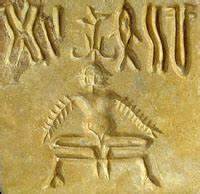
When you consider the condition of your life and state of humanity, you are likely to find at least a few reasons for changes on both fronts. Are your current purposes and goals worthy of lifetime pursuits? Are you fulfilled? Are you deeply happy? In our busy lives, we don’t often stop to examine how we’re doing on these questions or whether we’ve asked them at all. There are so many distractions, so many vital challenges to be confronted that we can resemble hamsters on a wheel in our efforts to survive. But on what level are we surviving under these conditions? In this article, I intend to explore what yoga is about, what it can do for human beings and how it can bring about changes both meaningful as well as enduring.
Where Did Yoga Come From?
Yoga was developed between eight and ten thousand years ago in India. The word originates with the Sanskrit word yuj and means union of the yoga practitioner with universal consciousness (the Divine, God or that which shall remain nameless). The practitioners, also known as yogis, had written Indian philosophy into the Vedas, which are the most ancient sacred writings for the priests of Vedic religion. The four chief collections are the Rig Veda, Sama Veda, Yajur Veda, and Atharva Veda. They were said to have been revealed to seers among the early Aryans in India. They were first preserved by oral tradition before being written.
Classical yoga was included in the Vedas. After being in existence for as much as 5000 years, yoga texts were collected and systematized, then made more broadly available by Maharishi Patanjali by writing a book called Patanjali Yoga Sutra. One of his greatest contributions to yoga was his outlining of the yoga rite progression, known as the Eightfold Path of Yoga. It shows us the components of this practice that leads to God Realization, or if that’s a bit much to swallow, then think of it as universal consciousness or Self Realization.
The Eightfold Path
The Eightfold Path steps are broken down as 1) Yama, which means that which is prohibited. The aspirant to spiritual enhancement must adhere to certain rules of living. They include not injuring others, no lying, no stealing, control of sexual impulses and refraining from coveting.
2) Niyama, stating what should be done. These come under the heading of self-discipline and include body cleanliness, study of scriptures and one’s inner self, and surrender to God.
3) Asana, a part of yoga that is familiar to most people. It has to do with holding specified postures that can help with transcendence in meditation. There are many of these poses and they should be performed with concentration, but the most important of these is the one used while meditating. It’s vital for the spine to be erect, the reason for which will be covered in Part Two.
4) Pranayama, or Life-force Control, is about controlling the breath. This has benefits involving physical and emotional health, but it goes much further. Breath is part of the life force and it’s said that the pranayama technique of yoga teaches a scientific way of separating the mind from sensations of the fives senses. This brings about an opportunity to free the mind for seeking a cognizant connection with the universal consciousness. It also sets up the next step.

5) Pratyahara, or withdrawal, is the state in which a person is so interiorized in mind that they are not being subjected to external stimuli. This enables the meditator to observe oneself exclusively and gain insights into who they are, their obstacles to growth and how to resolve them.
6) Dharana, meaning concentration, involves holding the mind on a single object. The object can be a mental construct, such as love or peace. It can be the concept of truth or some aspect of God one wishes to delve into deeply. Concentrating on the sound of Aum (or Om, as it’s commonly spelled) while listening to it being chanted seems like an intriguing possibility. You may have experienced something like dharana if you’ve ever been intensely involved in study or work or a creative project to the degree that you became unaware of whatever was going on around you.
7) Dhyana, which is the attainment of true meditation. At this point where one been able to reach stability in absolute concentration through the previous step, a higher level of contemplation of the cosmos is reached. Uninterrupted stillness and silence within is realized at this stage.
8) Samadhi, the ultimate goal of union with the Divine, is finally achieved. This is the level of enlightenment, the realization of truth beyond intellectual understanding. It comes with a state of ecstasy, transcendence and universal connectedness.
Semi-Summary
As Part One draws to a close, you can see yoga goes far beyond stretching and contorting the body. The feelings of peace and calm it brings from practicing it on the physical level merely scratch the surface of its benefits overall. In Part Two, we’ll explore what it can mean on a deeper level for you and your global family.
